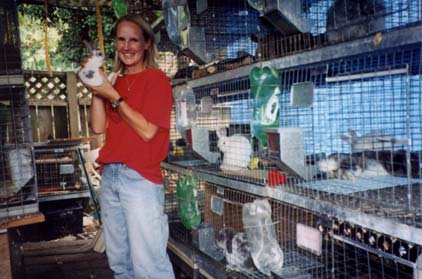|
Basic Rules of Keeping Your Rabbit Healthy and Happy
 | All opinions expressed below are the opinions of the Rabbit Hill. If in doubt please consult your veterinarian. |
|
Basic Rules of Keeping Your Rabbit Healthy and Happy
 | All opinions expressed below are the opinions of the Rabbit Hill. If in doubt please consult your veterinarian. |
The Rabbit Hill
Benicia, CA
707.746-1162
© Copyrght Miyoji Productions
|
FEEDING Water:
Pellets:
Hay Products:
Treats:
|
The Rabbit Hill
Benicia, CA
707.746-1162
© Copyrght Miyoji Productions
|
HOUSING
|
The Rabbit Hill
Benicia, CA
707.746-1162
© Copyrght Miyoji Productions
|
TOYS
|
The Rabbit Hill
Benicia, CA
707.746-1162
© Copyrght Miyoji Productions
|
LITTER TRAINING:
|
The Rabbit Hill
Benicia, CA
707.746-1162
© Copyrght Miyoji Productions
|
HANDLING:
|
The Rabbit Hill
Benicia, CA
707.746-1162
© Copyrght Miyoji Productions
|
OTHER HINTS:
IF YOU HAVE ANY QUESTIONS, PLEASE FEEL FREE TO CONTACT ME-email is usually best! All opinions expressed above are the opinions of the Rabbit Hill. If in doubt, please consult your veterinarian.
|
The Rabbit Hill
Benicia, CA
707.746-1162
© Copyright Miyoji Productions